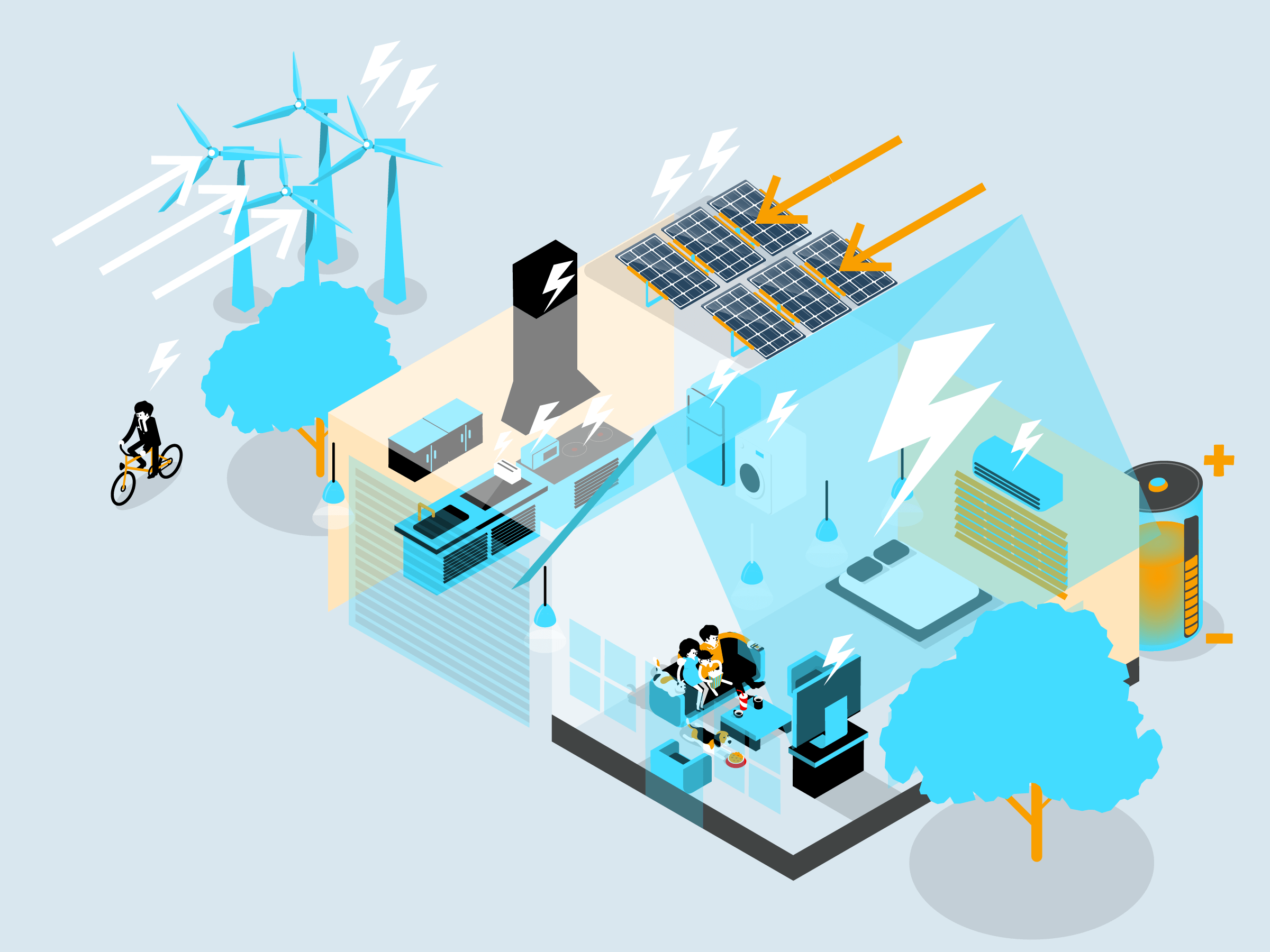
What is a microgrid?
A microgrid is a small energy grid that is tied into a larger, traditional power grid but can run independently off a local energy source. They are unique in that they are located very near to, or at the location of, energy consumption, eliminating the need to transport power over long distances. Microgrids can generate power from traditional energy sources or renewable energy sources. In fact, the rise of affordable renewable energy sources (including solar panels, microturbines, and fuel cells) has made distributed energy generation possible and led to a recent popularization of microgrids.
Microgrids range from grids powering a single facility to grids powering entire communities. For instance, the Santa Rita Jail is a single building that functions off a molten carbonate fuel cell and lithium iron battery, while the entire Fort Collins Zero Energy District runs off of a grid of solar panels, microturbines, fuel cells, and thermal storage.
A report from Navigant Research suggested that by 2020, microgrids may become a forty billion dollar industry. And in 2017, GTM Research tracked over 1,900 microgrids in the United States alone.
Microgrids - A Brief History
While the popularization of microgrids is a new phenomena, microgrids themselves were the original form of energy distribution. Before modern utilities built the vast network of power lines that criss-crosses our nation today, power had to be produced locally. In fact, the very first utility was Thomas Edison's Pearl Street Station, which was a self-contained, coal-powered microgrid that produced roughly six thousand kW DC. The station opened in 1882 and serviced a few city blocks, eventually powering ten thousand lamps for over five hundred customers.

Pearl Street Station
Once people figured out how to transport energy over long distances, the idea of microgrids was left behind. Our now traditional energy distribution model was once cutting-edge, the way of the future. Despite the drawbacks of low efficiency and frequent power outages, the pricing of energy-production equipment left no other alternative except mass production. Until now.
Microgrids are coming back into fashion because they are more feasible, both economically and technologically, than ever before. Cheaper energy production technology means microgrids are accessible to the average Joe. Take solar panels for an example. From 2010 to 2017, the cost of residential solar dropped from $5/watt to $2/watt. Storing that energy in various types of batteries, vital for smoothing out fluctuations in wind and solar panel, is becoming more affordable as well. While Joe can't afford to build his own nuclear plant or install wind turbines in his backyard, he can install solar panels and batteries.
Looking forward, it's possible utilities will move away from their volumetric pricing. Currently, utilities base pricing off the volume of electricity they sell, which is why they have not welcomed the popularization of locally generated power. However, the rise of microgrids may eventually prompt utilities to switch from selling per watt to selling services. This could be great for consumers, as service-centric companies are typically more customer-service oriented (go figure).
It is even possible that in the future, "the grid" will be composed primarily or even entirely of microgrids. If hundreds of networked microgrids worked together, this "modular architecture" could provide a more efficient and secure source of power without the problem of large-scale power outages. But we're not quite there yet.

Posted by PDI Marketing Team
Pacific Data Integrators Offers Unique Data Solutions Leveraging AI/ML, Large Language Models (Open AI: GPT-4, Meta: Llama2, Databricks: Dolly), Cloud, Data Management and Analytics Technologies, Helping Leading Organizations Solve Their Critical Business Challenges, Drive Data Driven Insights, Improve Decision-Making, and Achieve Business Objectives.





